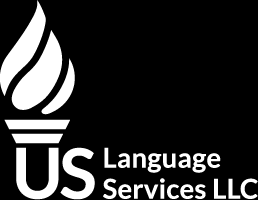How to Work in the U.S. As a Foreign-Educated Podiatrist

Podiatry is a unique and interesting medical field to enter, and many individuals who practice as podiatrists in the United States find this a rewarding career. There are many benefits to being a podiatrist in the United States, including excellent pay. The U.S. Bureau of Labor Statistics lists the average pay of podiatrists as ranging between $61,350 and $208,000, with $145,840 being the median annual salary. If you are a foreign-educated podiatrist wondering how to move your practice to the United States, review our guide. We give you important information about this process and answer essential questions such as:
- What Is the Process for Working in the U.S. As a Foreign-Educated Podiatrist?
- How Much Does It Cost to Work as a Foreign-Educated Podiatrist in the U.S.?
- How Long Does It Take To Work as a Foreign-Educated Podiatrist in the U.S.?
- Are There Any Restrictions to Working as a Foreign-Educated Podiatrist in the U.S.?
- What Are the State-Specific Requirements for Foreign-Educated Podiatrists?
- What Are the Immigration Requirements for Foreign-Educated Podiatrists?
- Where Can I Get a Certified Translation?
What Is the Process for Working in the U.S. As a Foreign-Educated Podiatrist?
This process contains several steps and requires that you meet all U.S. education and licensing requirements before being able to legally practice as a podiatrist in your chosen state. Make sure that you also note that state licensing is handled individually, and you should keep the state you wish to move to in mind before reviewing this process. The steps needed to become a foreign-educated podiatrist in the United States include the following:
- You will need to ensure that your education meets U.S. standards as the first part of this process, and this step can be lengthy. Most states require that you have a podiatrist education from a program accredited by the Council on Podiatric Medical Education. Some educational programs in the U.S. will evaluate your foreign credentials and help you complete additional requirements to ensure you meet the U.S. educational standards required of the Doctor of Podiatric Medicine (DPM) degree, and you will most likely need to complete your education through one of these programs. This is a lengthy process because, depending on your education from your home country, you may need to complete between 1 and 4 additional years of schooling, regardless of how much education you obtained in a foreign country.
- When you have finished meeting U.S. education requirements for podiatrists, you will need to prepare for and pass the American Podiatric Medical Licensing Exam (APMLE). This examination has two parts, and you must pass the exams before moving on to the next parts of this process.
- After you have met U.S. education and examination requirements, you will need to complete your residency. You cannot progress to a licensed DPM without a residency in a U.S.-based program. Entry requirements for podiatric residency vary based on the program you are trying to apply to, but you should expect to submit your proof of meeting basic education requirements and examination requirements. Residency programs last approximately two years.
- Once you have finished your residency, it’s time to apply for state licensing. Every state handles licensing individually, so you will need to check with your chosen state’s podiatry licensing board for specific information about application procedures, licensing fees, additional state exams, and ongoing education or licensing requirements. The Federation of Podiatric Medical Boards features an interactive map that you can use to browse different state podiatry licensing requirements and access the websites for each state’s licensing board.
- The final step in ensuring you are able to work as a Doctor of Podiatric Medicine in the U.S. is meeting immigration requirements. You will need to obtain a visa that allows you to live and work in the U.S. or apply for a green card (also known as a permanent resident card) before you are able to settle in your chosen state and start your podiatric practice. Consult an immigration lawyer for more information about this process.
How Much Does It Cost to Work as a Foreign-Educated Podiatrist in the U.S.?
It’s not inexpensive to work as a foreign-educated podiatrist in the U.S., and this is due to the extensive education and residency requirements every individual will need to complete before they are eligible for state licensing. Depending on the program that evaluates your foreign credentials and your specific foreign education, you may need to complete between 1 and 4 years of U.S.-based education before you are eligible to take the AMPLE (there is a fee to register for this exam) and complete your podiatric residency. State licensing also comes with fees, as does your visa or green card applications and any legal consultation that you need. Overall, this process can cost tens of thousands of dollars depending on your specific situation and any education requirements you need to meet.
How Long Does It Take To Work as a Foreign-Educated Podiatrist in the U.S.?
Becoming a foreign-educated podiatrist in the U.S. takes several years, as education, examination, and residency requirements must be met before you are eligible to apply for a state license. On average, this process takes between 2 and 8 years, and that includes the time for completing additional education requirements, your two-year residency, preparing for and taking the AMPLE, and applying for your state license. Applying for and receiving a visa or green card is also factored into this average timeline.
Are There Any Restrictions to Working as a Foreign-Educated Podiatrist in the U.S.?
If you’ve completed all of the education, examination, and residency parts of this process in addition to receiving your state license and the proper immigration materials, you can practice as a foreign-educated podiatrist in the United States without restrictions. Make sure that you stay up to date with any continuing education and license renewal requirements for your state, and that you meet any immigration requirements as needed.
What Are the State-Specific Requirements for Foreign-Educated Podiatrists?
States handle licensing for podiatrists differently, and it’s important to check directly with your state’s podiatric licensing board for the specific requirements and application procedures you will need to meet. For most states, these requirements include licensing fees, proof of meeting education and examination requirements, referrals from professionals you’ve worked with, information about your residency, and additional state legal and ethics exams for medical practitioners. Navigate state-specific podiatry licensing information with the chart provided by the Federation of Podiatric Medical Boards.
What Are the Immigration Requirements for Foreign-Educated Podiatrists?
As a healthcare professional, you may have several options for visas to choose from as you consider working in the United States. In most cases, you will be eligible for the H-1B visa, employment-based EB-2 or EB-3 visas, or the TN NAFTA Professionals visa, but this depends on your specific professional situation and, occasionally, the country you are moving from. You may also be eligible for a direct green card application. You will need to obtain the Health Care Worker Certification (HCWC) via United States Citizenship and Immigration Services (USCIS) before applying for any of the above visas, and you may need a student visa if you are completing additional education and residency requirements in the U.S. before obtaining your state license. An immigration lawyer will be able to provide you with more accurate information about this process and guide you to the best immigration option for your situation.
Where Can I Get a Certified Translation?
Certified translations of your original documents are important to have on hand during this process, as you will likely need to submit them to educational programs and residency programs in addition to state licensing and immigration applications. To receive reliable and accurate certified translations of your original documents, visit our online store. We translate important documents including:
- Diplomas
- Academic transcripts
- Business licenses and certifications
- Resumes and employment records
- Birth certificates
Guaranteed Acceptance
All our certified to English translations are accepted by the USCIS. Our translations follow the guidelines established by the USCIS and are also accepted by educational institutions.
Most Requested Documents
FAQs
You can order most translations 24 hours a day, 7 days a week through our online store. For large projects (more than 20,000 words or 50 pages), please request a quote.


